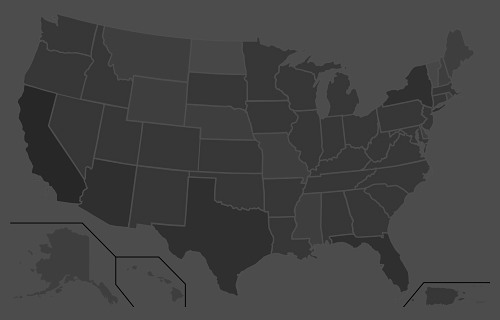“Our added winter moisture and active calling period led to a very long nesting and hatching season, starting in late April and extending into early summer, with chicks hatching as late as early July,” O’Dell said. “From a population standpoint, we are out of a deficit for the first time since 2001-2002. Quail are starting to pop up in places they haven’t been seen in a while.
“If you’ve never had the chance to experience what Arizona quail hunting built its name on, then this would be the year to get out and enjoy it.”
Meanwhile, hunters should note that the season for Mearns’ quail doesn’t begin until Dec. 4. It’s summer rainfall that plays a key role in nesting success and population numbers of this species. After a spotty and relatively weak monsoon across southern Arizona, these birds are likely to be abundant only in pockets that received sufficient precipitation this summer.
A valid Arizona hunting or combination hunt and fish license is required for all hunters 10 and older. Those hunters under 10 must either have a valid hunting or combination hunt and fish license, or be accompanied by an adult who possesses a valid hunting or combination hunt and fish license. Licenses can be purchased online or at license dealers statewide. A youth combination hunt and fish license (ages 10 to 17) is $5.
The general bag limit is 15 quail per day in the aggregate, of which no more than eight may be Mearns’ quail (when the Mearns’ season opens Dec. 4). The general possession limit is 45 quail in the aggregate after opening day, of which no more than 15 Gambel’s, scaled or California quail in the aggregate may be taken in any one day. After the opening of the Mearns’ season, the 45-quail possession limit may include 24 Mearns’ quail, of which no more than eight may be taken in any one day.
More quail-hunting information can be found on the department’s website at https://www.azgfd.com/Hunting/. Another resource for both new and experienced hunters alike is “An Introduction to Hunting Arizona’s Small Game.” Written by Randall D. Babb, the 196-page, full-color book covers where and how to hunt small game birds (like quail), squirrels, rabbits, ducks and geese. It also includes how to prepare and cook your harvest, with illustrations and recipes. The book can be ordered for $16.95 at www.azgfd.gov/publications.
Finally, hunters should check out O’Dell’s techniques for field-dressing quail at https://www.youtube.com/watch?v=3gRwZAcWzzk.
####
Publishers Notes: OUT OF STATE HUNTERS, FISHERMEN & OUTDOOR ENTHUSIASTS; Due to the Covid 19 pandemic, there could be limitations for OUT of STATE hunters, fishermen and other outdoor enthusiasts to include a 14-day quarantine requirement or negative COVID-19 testing alternative. Please check with the State's Department of Natural Resources BEFORE you travel or apply for the 2020 Fall Hunts.
Disclaimer: The views expressed on this site are that of the authors and not necessarily that of TBC Press
A concurrent bear hunting season without dogs opens alongside West Virginia 2020 buck firearms season in 51 counties Nov. 23.
“Counties that will be open for bear hunting during the buck gun season have been opened to slow bear population growth and provide additional hunting opportunity,” said Colin Carpenter, Black Bear Project Leader for the West Virginia Division of Natural Resources. “Timing is critical when setting bear hunting seasons, and the concurrent buck gun bear season will occur when the maximum number of hunters are in the woods.
All counties that are open to buck firearms hunting will be open to concurrent bear hunting on private and public land from Nov. 23 to Dec. 6. Buck firearms season is closed in Logan, McDowell, Mingo and Wyoming counties.
Carpenter says mast conditions vary widely based on location. In many areas of the state, abundant red oak group mast means bears will be dispersed across the landscape.
“We’re now seeing bears in counties where they have been absent for decades, so there has never been a better opportunity to hunt a bear in West Virginia,” Carpenter said. “These special seasons offer a unique opportunity for hunters who may have never bear hunted before to harvest a bear and we hope that they take advantage of this additional chance.”
Bear hunting opportunities continue after the buck firearms season as well. From Dec. 7-31, all or parts of 24 counties will be open for bear hunting with or without dogs, while all or parts of 37 counties will be open for bear hunting without dogs.
Hunters Must Submit First Premolar Tooth From Harvested Black Bears
Successful hunters are required to submit a first premolar tooth from each harvested bear. Information on how to collect and submit a black bear first premolar tooth can be found on page 37 of the 2020-2021 Hunting and Trapping Regulations. Hunters who harvest a female black bear are also encouraged to save the reproductive tract or all the entrails. The WVDNR will send hunters who submit a complete reproductive tract a $20 gift card.
Hunters should keep harvested bear reproductive tracts and entrails cool or freeze them before contacting their nearest district office or the Elkins Operations Center to arrange drop-off. Hunters can get a bear tooth envelope and information on what a complete reproductive tract consists of at all district offices or the Elkins Operations Center. The WVDNR uses data obtained from tooth samples and reproductive tracts to monitor the state’s black bear population.
Black Bear Hunters Must Purchase Bear Damage Stamp
Resident hunters are reminded to purchase their bear damage stamp (Class DS) when they buy their hunting license. Non-resident hunters must purchase a Class EE license plus the bear damage stamp to hunt bear in West Virginia. Details concerning bear hunting seasons can be found on pages 34-40 of the 2020-2021 Hunting and Trapping Regulations, available at WVDNR offices, license vendors across the state and at wvhunt.com.
####
Publishers Notes:
Our country is still battling COVID-19. To avoid the spread of this virus and continue to enjoy outdoor activities, ALL outdoor enthusiasts (man, woman, child) should follow the guidelines set by nps.gov. These guidelines include; social distancing, the Leave No Trace principles, including pack-in and pack-out, to keep outdoor spaces safe and healthy.
West Virginia 2020 Concurrent Bear Hunting Season Opens
Submitted by: TBC Press
Posted on: 11/23/20
The Backcountry Press
The country's premier daily HUNTING, FISHING & OUTDOOR news in the USA and around the globe. Read whats happening in your neck of the woods & beyond.
© 2020 TBC Press - All Rights Reserved Website Design by:
News # 14088












